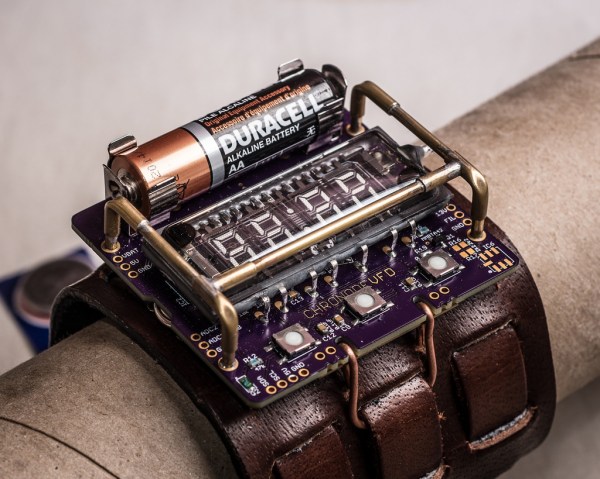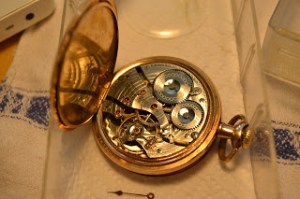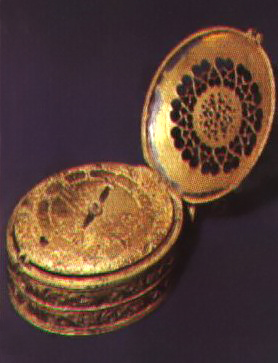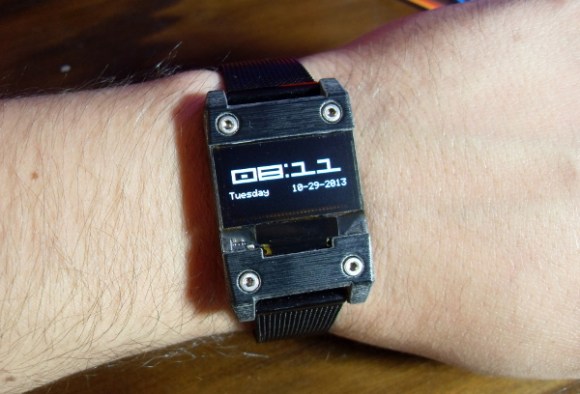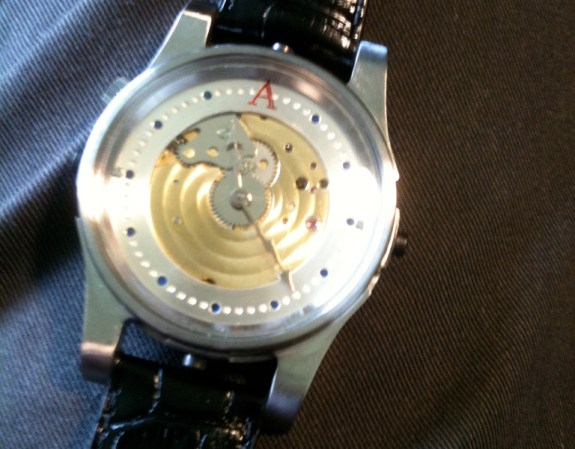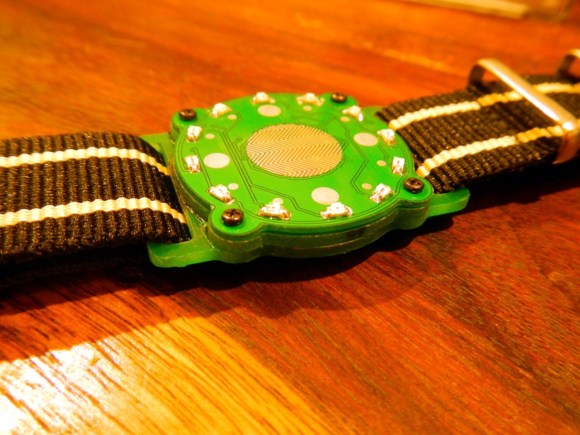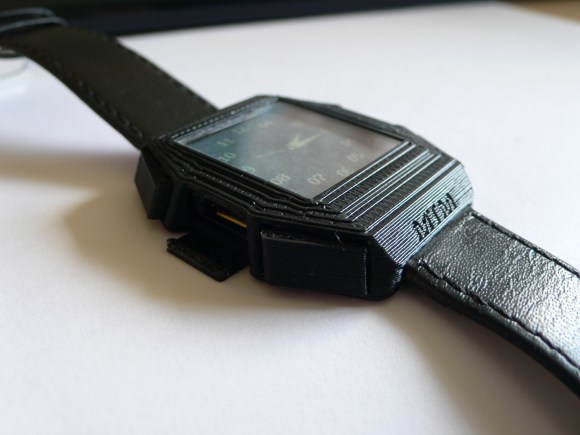Not just another steampunk fashion statement, [Johngineer’s] ChronodeVFD wristwatch is as intricate as it is beautiful. Sure, we’ve seen our share of VFD builds (and if you want a crash course in vacuum fluorescent displays, check out Fran’s video from earlier this year) but we seldom see them as portable timepieces, much less ones this striking.
The ChronodeVFD uses a IVL2-7/5 display tube, which in addition to being small and low-current is also flat rather than rounded, and features a transparent backing. [Johngineer] made a custom board based around an AtMega88 and a Maxim DS3231 RTC (real time clock): the latter he admits is a bit expensive, but no one complains about left-overs that simplify your design.
The VFD runs off a Maxim MAX6920 12-bit shift register and is powered by a single alkaline AA battery. A rechargable NiMH would have been preferable, but the lower nominal voltage meant lower efficiency for his boost converters and less current for the VFD. [Johngineer] won’t get much more than 6-10 hours of life, but ultimately the ChronodeVFD is a costume piece not meant for daily wear. Swing by his blog for a number of high-res photos and further details on how he built the brass tubing “roll cage” enclosure as well as the mounts for the leather strap.

